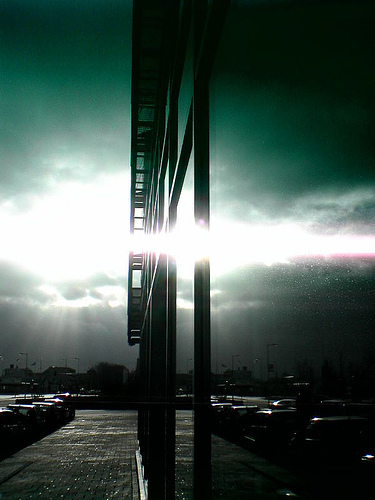How to take pictures with a mobile phone
Taking pictures with your phone is great fun, as convenient as you can get, and you can share the shots with anybody in the world almost instantly. There are some things to remember though.

Cozy Sunset by ^riza^ on flickr (licensed CC-BY)
Clean the lens. Over time the camera lens can get dirty and create a blurred image. Just give it a good wipe.
Pick your subject carefully. Bearing in mind the usual limitations of camera phones. This means:
Avoid subjects in low light, at least if you want them to be consistently lit. The small sensors in camera phones cannot run at high ISO speeds (i.e. high sensitivity to light, permitting indoor photos without a flash) without introducing large amounts of noise. In most circumstances, this makes indoor photos other than in the best-lit places difficult.Avoid bright reflections, and other "hot-spots". This will either force the camera to under-expose the rest of the shot, or cause the camera to blow out the highlights on the brightest parts of the shot. The latter is worse, since it is sometimes possible to extract details from parts of the image that are too dark, but impossible to recover blown highlights (since there is no detail to extract). On the other hand, this can be used to artistic ends, such as with bright light streaming through a window.

God is peeking through the Clouds by AmsterSam - The Wicked Reflectah on flickr (licensed CC-BY)Avoid anything that requires tight focusing. Due to their very short focal lengths (the distance between a camera's optical elements and the sensor, again, owing to their small sensors), camera phones excel at shots where nearly all of a scene is in focus. However, this (and their typically weak auto-focus mechanisms) usually precludes focusing on objects very close to the phone, or having a very shallow depth of field to get a blurred background effect (this be faked in software later anyway).
Avoid "mirror shots", as well as arm-length shots taken by yourself. Aside from them being clichèd, they require taking photos indoors and mirrors also often end up confusing auto-focus mechanisms. Get outside and get someone to take the photo for you. If you'd rather take the picture yourself, most camera phones have an auto-timer feature so you can set the phone somewhere and get into frame.
Set your phone to its highest picture quality and resolution. You might end up taking a good enough shot that you want to print it out; you won't be able to do this if you only have a low-resolution version of the photo.
Turn off picture frames. A normally great shot may be ruined by a cheesy frame or background; if you really must have one, add the frame afterwards.
Turn off any other effects. These include black-and-white, sepia tones, inverted colours, and so on. These aren't as necessarily as cheesy-looking as frames and have their place; nonetheless, these things are much better done in photo editing software afterwards than on board the phone. You may find, for example, that when you view your photo on a large screen that the colours in your scene are far too good to lose to black-and-white.

Hammer365: 165/200 Rainbow in Kansas by David Reber's Hammer Photography on flickr (licensed CC-BY-SA)Set the white balance, if your phone supports it. The human eye usually adjusts for lighting, and so white appears white in any kind of lighting. A camera, however, will see that a given subject is redder than normal under normal incandescent household lighting. Better camera phones will give you the option to adjust the camera for this. If you have such an option, use it. If you're not sure what setting to use, experiment.
Use your flash judiciously. If you find yourself using a flash because your whole scene is insufficiently lit, you're probably taking photographs indoors in poor light. Don't do this, a scene lit entirely by your flash will look unnatural, since on a camera phone it is not typically possible to aim the flash anything but directly ahead (i.e. you can't bounce it off ceilings or walls, as with dedicated flash guns for SLR cameras). On the other hand, a flash is a good option for filling in shadows in harsh sunlight.
Frame your shot. Make sure that everything you want in the shot is in the picture, and ready to be captured. Some phones show the entire viewfinder, meaning that what is on the screen is exactly what will be captured in the image. Other phones, however, only show what is in the middle of the image, but will capture more than the viewfinder shows. It's better too much empty space into your picture; you can always crop it later.

Contemplation by Daran Kandasamy on flickr (licensed CC-BY-ND)Finally, take the picture. Keep your hand steady as you press the shutter button. After you take the picture, keep the phone in position to allow the picture to be recorded. If you move immediately after pressing the shutter button you will just get a blur!




